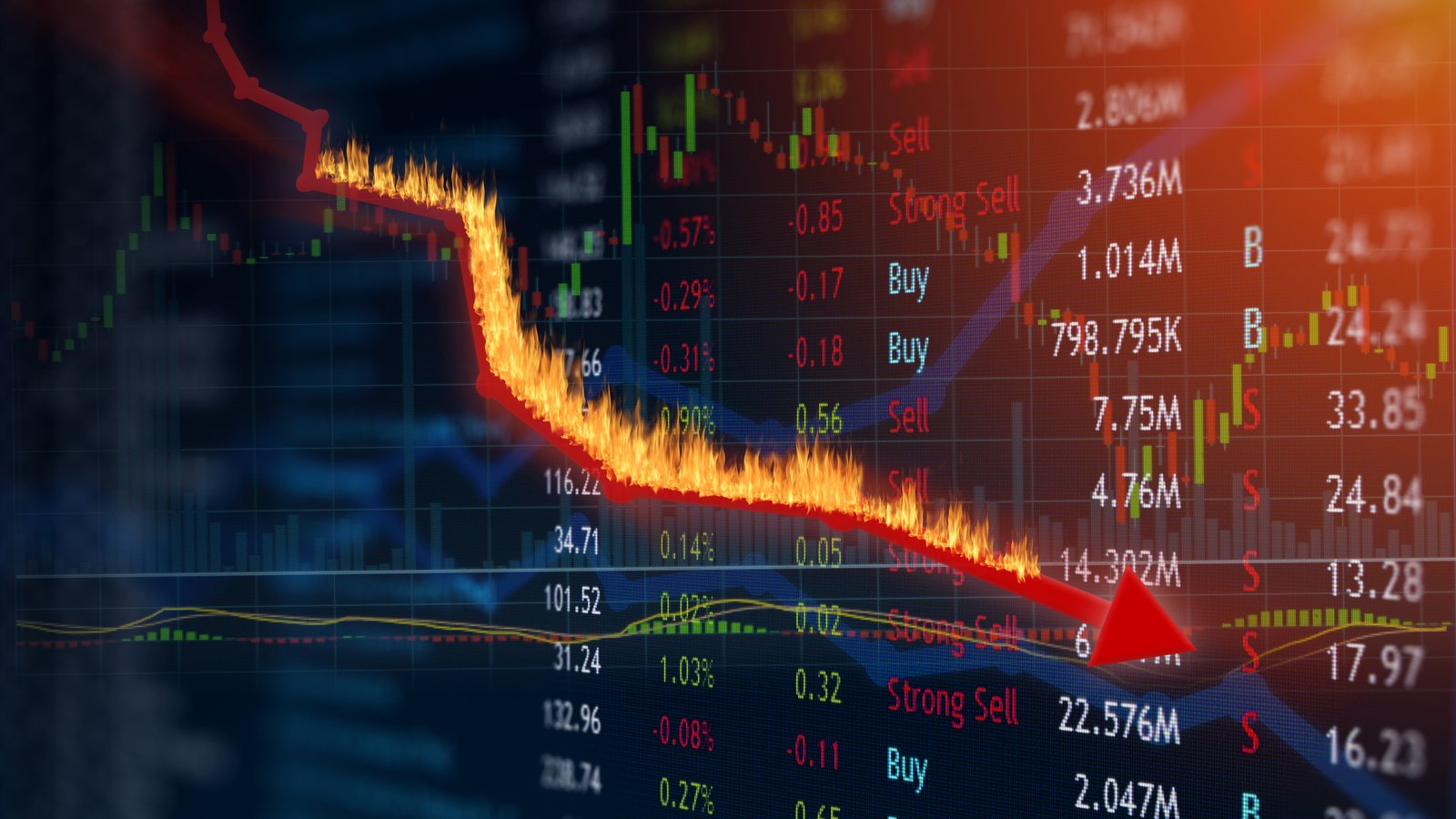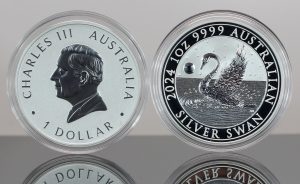Updated on March 13th, 2025 by Bob Ciura
Return on invested capital, or ROIC, is a valuable financial ratio that investors can add to their research process.
Understanding ROIC and using it to screen for high ROIC stocks is a good way to focus on the highest-quality businesses.
With this in mind, we ran a stock screen to focus on the highest ROIC stocks in the S&P 500.
You can download a free copy of the top 100 stocks with the highest ROIC (along with important financial metrics like dividend yields and price-to-earnings ratio) by clicking on the link below:
Using ROIC allows investors to filter out the highest-quality businesses that are effectively generating a return on capital.
This article will explain ROIC and its usefulness for investors. It will also list the top 10 highest ROIC stocks right now.
Table Of Contents
You can use the links below to instantly jump to an individual section of the article:
What Is ROIC?
Put simply, return on invested capital (ROIC) is a financial ratio that shows a company’s ability to allocate capital. The common formula to calculate ROIC is to divide a company’s after-tax net operating profit, by the sum of its debt and equity capital.
Once the ROIC is calculated, it is evaluated against a company’s weighted average cost of capital, commonly referred to as WACC.
If a company’s WACC is not immediately available, it can be calculated by taking a weighted average of the cost of a company’s debt and equity.
Cost of debt is calculated by averaging the yield to maturity for a company’s outstanding debt. This is fairly easy to find, as a publicly-traded company must report its debt obligations.
Cost of equity is typically calculated by using the capital asset pricing model, otherwise known as CAPM.
Once the WACC is calculated, it can be compared with the ROIC. Investors want to see a company’s ROIC exceed its WACC.
This indicates the underlying business is successfully investing its capital to generate a profitable return. In this way, the company is creating economic value.
Generally, stocks generating the highest ROIC are doing the best job of allocating their investors’ capital. With this in mind, the following section ranks the 10 stocks with the highest ROIC.
The Top 10 Highest ROIC Stocks
The following 10 stocks have the highest ROIC in the Sure Analysis Research Database. Stocks are listed by ROIC, from lowest to highest.
High ROIC Stock #10: Yum Brands Inc. (YUM)
- Return on invested capital: 44.6%
Yum Brands owns the KFC, Pizza Hut, Taco Bell, and The Habit Restaurants chains. It is present in more than 155 countries and has more than 59,000 restaurants, 60% of which are located abroad. KFC generates about half of the total revenue and operating profit of the company.
In early February, Yum Brands reported (2/6/25) results for Q4-2024. It grew its sales 8% over the prior year’s quarter thanks to 14% growth at Taco Bell, 6% growth at KFC and 3% growth at Pizza Hut. Store count grew 5%. Digital sales were over $9 billion and exceeded 50% of total sales.
Earnings-per-share grew 28%, from $1.26 to $1.61, and exceeded the analysts’ consensus by $0.01. Yum Brands keeps opening new stores at a fast pace. Management provided guidance for 8% growth of operating income in 2025. Accordingly, we expect earnings-per-share of $5.92 this year.
The strength of Yum’s brands and their appeal to consumers constitute a significant competitive advantage. Thanks to its established brands, the company enjoys reliable free cash flows.
As a result, the company is not likely to have issues servicing its debt. It is also worth noting that Yum Brands has proved markedly resilient during recessions, mostly thanks to its low-priced fast food offerings.
Click here to download our most recent Sure Analysis report on YUM (preview of page 1 of 3 shown below):


High ROIC Stock #9: TJX Companies (TJX)
- Return on invested capital: 46.9%
TJX Companies is a leading off-price retailer of apparel and home fashions in the U.S. and worldwide. As of November 2, 2024, the company operated 5,057 stores in nine countries.
These include 1,331 T.J. Maxx (26% of total), 1,219 Marshalls (24%) and 941 HomeGoods (19%) in the United States. TJX also operates e-commerce sites. In a normal year, the company generates ~$50 billion in annual revenue and ~$4 billion in net profit.
On 2/26/25, TJX released its fiscal Q4 and full-year 2025 results for the period ending 2/1/25. For the quarter, net sales fell marginally by 0.4% year over year to $16.4 billion due partly from Q4 FY2025 having 13 weeks vs 14 weeks in FY2024.
Consolidated comparable store sales rose 5%, driven by an increase in customer transactions. It witnessed comparable store sales growth across all its divisions with the strongest of 10% at TJX Canada, followed by 7% at TJX International (Europe & Australia), 5% at HomeGoods (U.S.), and 4% at Marmaxx (U.S.).
Diluted earnings-per-share rose 0.8% to $1.23, helped by a 1.2% reduction in its share count. The company repurchased stock at an average price of $123.62 per share.
For fiscal 2025, net sales climbed 4.0% to $56.4 billion with consolidated comparable store sales rising 4%. Net income rose 8.7% to $4.9 billion, and diluted EPS rose 10.4% to $4.26. During this period, TJX used nearly $2.5 billion to buy back shares at an average price of ~$111.88 per share.
Management provided an initial outlook for FY 2026: comparable store sales increase of 2-3% and diluted EPS to be $4.34-4.43.
Click here to download our most recent Sure Analysis report on TJX (preview of page 1 of 3 shown below):


High ROIC Stock #8: Altria Group (MO)
- Return on invested capital: 47.5%
Altria is a tobacco stock that sells cigarettes, chewing tobacco, cigars, e-cigarettes, and more under a variety of brands, including Marlboro, Skoal, and Copenhagen, among others.
With a current dividend yield of nearly 8%, Altria is an ideal retirement investment stock.
This is a period of transition for Altria. The decline in the U.S. smoking rate continues. In response, Altria has invested heavily in new products that appeal to changing consumer preferences, as the smoke-free category continues to grow.


Source: Investor Presentation
The company also has a 35% investment stake in e-cigarette maker JUUL, and a 45% stake in the Canadian cannabis producer Cronos Group (CRON).
Altria Group reported solid financial results for the fourth quarter and full year of 2024. For the fourth quarter, revenue of $5.1 billion beat analyst estimates by $50 million, and increased 1.6% year-over-year. Adjusted EPS of $1.29 beat by a penny.
For the full year, Altria generated adjusted diluted EPS growth of 3.4% and returned over $10.2 billion to shareholders through dividends and share repurchases.
For 2025, Altria expects adjusted diluted EPS in a range of $5.22 to $5.37. This represents an adjusted diluted EPS growth rate of 2% to 5% for 2025.
Click here to download our most recent Sure Analysis report on Altria (preview of page 1 of 3 shown below):


High ROIC Stock #7: Starbucks Corporation (SBUX)
- Return on invested capital: 51.2%
Starbucks began with a single store in Seattle’s Pike Place Market in 1971 and now has more than 39,000 stores worldwide. Nearly half of the stores are in the U.S. and nearly 20% of the stores are in China.
The company operates under the Starbucks brand, but also holds the Teavana, Evolution Fresh, and Ethos Water brands in its portfolio. The company generated $36 billion in annual revenue in fiscal 2024.
In late January, Starbucks reported (1/28/25) financial results for the first quarter of fiscal year 2025 (Starbucks’ fiscal year ends the Sunday closest to September 30th).


Source: Investor Presentation
Comparable store sales declined -4% due to a -4% decline in North America and a -4% decline in international markets. Same-store sales in China fell -6%.
Adjusted earnings-per-share decreased -23%, from $0.90 in the prior year’s quarter to $0.69, but exceeded the analysts’ consensus by $0.02.
Looking further out, Starbucks has a strong growth trajectory available over the long-term thanks to a growing U.S. and International store count, where the company is still in the early innings of expansion, coupled with pricing power.
Click here to download our most recent Sure Analysis report on SBUX (preview of page 1 of 3 shown below):


High ROIC Stock #6: Mastercard Inc. (MA)
- Return on invested capital: 52.9%
MasterCard is a world leader in electronic payments. The company partners with 25,000 financial institutions around the world to provide an electronic payment network. MasterCard has more than 3.1 billion credit and debit cards in use.
On January 30th, 2025, MasterCard announced fourth quarter and full year results for the period ending December 31st, 2024.
For the quarter, revenue improved 15.4% to $7.5 billion, which was $120 million above estimates. Adjusted earnings-per-share of $3.82 compared favorably to $3.18 in the prior year and was $0.13 more than expected.
For the year, revenue grew 12% to $28.2 billion while adjusted earnings-per-share of $14.60 compared to $12.26 in 2023.
On a local currency basis, gross dollar volumes for the quarter grew 12% worldwide to $2.56 trillion during the quarter, with the U.S. improving 9% and the rest of the world higher by 13%.
Cross border volumes remained strong, growing 20% from the prior year and 17% from Q3 2024.
Click here to download our most recent Sure Analysis report on Mastercard (preview of page 1 of 3 shown below):


High ROIC Stock #5: Apple, Inc. (AAPL)
- Return on invested capital: 54.1%
Apple designs, manufactures and sells products such as iPhones, iPads, Mac, Apple Watch and Apple TV. Apple also has a services business that sells music, apps, and subscriptions.
On January 30th, 2025, Apple reported financial results for the first quarter of fiscal year 2025 (Apple’s fiscal year ends the last Saturday in September).
Total sales grew 4% over the prior year’s quarter, to a new record of $124.3 billion, thanks to sustained growth in iPhone, iPad and Wearables across all regions.
Earnings-per-share grew 10%, from $2.18 to $2.40, and exceeded the analysts’ consensus by $0.05. Notably, Apple has missed the analysts’ estimates only once in the last 25 quarters.
Going forward, Apple’s earnings growth will be driven by several factors. One of these is the ongoing cycle of iPhone releases, which creates lumpy results. In the long run, Apple should be able to grow its iPhone sales, albeit in an irregular fashion.
Click here to download our most recent Sure Analysis report on AAPL (preview of page 1 of 3 shown below):


High ROIC Stock #4: Domino’s Pizza Inc. (DPZ)
- Return on invested capital: 59.3%
Domino’s Pizza was founded in 1960. It is the largest pizza company in the world based on global retail sales. The company operates more than 21,000 stores in more than 90 countries.
It generates nearly half of its sales in the U.S. while 99% of its stores worldwide are owned by independent franchisees.
In late February, Domino’s reported (2/24/25) financial results for the fourth quarter of fiscal 2024. Its U.S. same-store sales grew 0.4% and its international same-store sales rose 2.7% over the prior year’s quarter.
Earnings-per-share grew 9%, from $4.48 to $4.89, thanks to higher sales and lower selling costs. Earnings-per-share missed the analysts’ consensus by $0.01, for the first time after 8 consecutive quarters of wide earnings beats.
Domino’s still expects to grow its global retail sales and its operating income by 7% and 8% per year, respectively, until the end of 2028.
The pizza chain has ample room to keep growing for years. Its management sees potential for the addition of more than 10,000 new stores in its top 15 markets.
As the current store count in these countries is approximately 11,000, it is evident that there is still tremendous growth potential even without taking into account the growth potential in the other ~75 markets where the company is present.
Click here to download our most recent Sure Analysis report on DPZ (preview of page 1 of 3 shown below):


High ROIC Stock #3: McKesson Corporation (MCK)
- Return on invested capital: 64.3%
McKesson Corporation traces its lineage to 1833 when its founders began to offer wholesale chemicals and pharmaceuticals in New York City.
In the 190 years since, McKesson has grown into a powerhouse in the pharmaceutical and medical distribution industry and today, generates more than $300 billion in annual revenue.
The company has generated strong growth in the past five years.


Source: Investor Presentation
McKesson posted third quarter earnings on February 5th, 2025, and results were mixed. Adjusted earnings-per-share narrowly beat expectations by four cents, coming to $8.03.
Revenue was up 18% year-over-year to $95.3 billion, a record for McKesson. That was, however, $570 million short of expectations.
Specialty pharmaceutical revenue soared 45% year-over-year to $10.9 billion. This was helped greatly by the continued adoption of GLP-1 medications.
Medical-Surgical revenues fell 3% to $2.9 billion due to lower-than-expected illness season demand. Operating profit was up 4% to $294 million due to cost containment efforts.
Consolidated operating profit was up 16% to $1.5 billion. The company also noted it took an 80% ownership interest in PRISM Vision Holdings for $850 million for its ophthalmology and retina management services.
Click here to download our most recent Sure Analysis report on MCK (preview of page 1 of 3 shown below):


High ROIC Stock #2: Otis Worldwide (OTIS)
- Return on invested capital: 69.0%
Otis Worldwide Corp. debuted as an independent, publicly traded company on April 3rd, 2020, after being spun off from United Technologies (previously UTX, now Raytheon Technologies, RTX).
Today Otis is the leading company for elevator and escalator manufacturing, installation, and service.
On January 29th, 2025, Otis reported financial results for the fourth quarter of fiscal 2024. Sales and organic sales grew 1.5% and 2%, respectively, while adjusted earnings-per-share grew 7%, from $0.87 to $0.93, though they missed the analysts’ consensus by $0.03.
Otis has missed the analysts’ estimates twice after 17 consecutive quarters of having beaten estimates. Backlog grew 10%. This bodes well for the performance of Otis in the upcoming quarters.
Thanks to sustained business momentum, Otis provided positive guidance for 2025. It expects 2%-4% growth of organic sales and adjusted earnings-per-share of $4.00-$4.10.
At the mid-point, this guidance implies 6% growth over the prior year.
Click here to download our most recent Sure Analysis report on OTIS (preview of page 1 of 3 shown below):


High ROIC Stock #1: Cardinal Health (CAH)
- Return on invested capital: 71.6%
Cardinal Health is one of the “Big 3” drug distribution companies along with McKesson (MKC) and AmerisourceBergen (ABC). Cardinal Health serves over 24,000 United States pharmacies and more than 85% of the country’s hospitals.
Over 90% of the company’s revenue comes from the Pharma & Specialty areas.


Source: Investor Presentation
With 36 years of dividend increases, the company is a member of the Dividend Aristocrats Index.
On January 30th, 2025, Cardinal Health announced results for the second quarter of fiscal year 2025 for the period ending December 31st, 2024. For the quarter, revenue decreased 3.7% to $55.3 billion, but this was $330 million above estimates.
On an adjusted basis, earnings of $468 million, or $1.93 per share, compared favorably to earnings of $464 million, or $1.89 per share, in the prior year. Adjusted EPS was $0.17 better than expected.
Collectively the three major pharmaceutical wholesalers have a competitive advantage in the industry. Competition is held at bay by the massive scale already in place and the exceptionally low margins.
Cardinal Health has proven to be a solid operator in many ways – strong earnings for the past decade, a growing dividend and ample interest coverage.
Click here to download our most recent Sure Analysis report on CAH (preview of page 1 of 3 shown below):


Final Thoughts
There are many different ways for investors to value stocks. One popular valuation method is to calculate a company’s return on invested capital.
By doing so, investors can get a better gauge of companies that do the best job of investing their capital.
ROIC is by no means the only metric that investors should use to buy stocks. There are many other worthwhile valuation methods that investors should consider.
That said, the top 10 ROIC stocks on this list have proven the ability to create economic value for shareholders.
Further Reading
If you are interested in finding high-quality dividend growth stocks suitable for long-term investment, the following Sure Dividend databases will be useful:
Thanks for reading this article. Please send any feedback, corrections, or questions to [email protected].



































